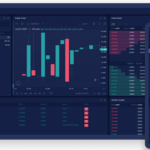Nicole Carroll, editor-in-chief of USA TODAY: Welcome to The Backstory, a look behind the headlines of the week. Sign up here to receive a weekly email from The Backstory.
The amount of rain in your area seems unusually high. You’re most likely correct.
Do you think it’s rained less than usual where you live? Again, I believe you are correct.
With 126 years of monthly data from the National Oceanic and Atmospheric Administration, USA TODAY reporters examined average annual precipitation at 344 climate divisions for our climate change investigation, titled Downpour. They analyzed the frequency of extreme rain events across the United States from 1951 to 2020 using daily precipitation data from weather stations.
Dinah Pulver, one of the project’s leads reporters, said, “We were hearing a lot about extreme rainfall, stories of flooding, people with sewer backups, people flooded out of their homes, and we wanted to know, is this happening everywhere? ” This kind of rainfall is affecting how many people and how many places.
The wettest periods on record since 2018 were found in more than half of the country’s 344 climate divisions, according to our research. State-level rolling averages were also computed.
Rain is falling more frequently and with greater intensity east of the Rockies, according to our report. “In the West, people are having to wait longer for any rain to fall at all.
There has been a dramatic shift in precipitation patterns in the United States as a whole, according to this reporting.

Since record-keeping began in 1895, 27 states east of the Rocky Mountains have experienced a record amount of precipitation over the past three years.
There have been five of the 10 wettest years in the past two decades in 12 states, including Iowa and Rhode Island.
Over the past 13 years, Michigan has had six of its wettest 10 years on record.
As many as 136 record-breaking days of rainfall were set during storms that swept across five states along the Mississippi River during June.
Eight states, including five in the West, had at least three record-dry years during the same time period, on the other hand. a. According to historical patterns, this is twice as much as expected.
According to Mann, the jet stream weakens and wanes in the summer as the temperature differential narrows. As a result, weather systems moving across the country may slow or stall more frequently than previously thought possible.
Also Read: Recommendations for Protection “Regardless of Variant”: COVID Has Updated Its Recommendations
According to Chris Davis, executive editor for investigations at USA TODAY, “The gentle rain for a number of days is kind of disappearing and is being replaced by downpours.” When it comes to flooding, mudslides in the west, and the amount of fertilizer that is picked up and carried into the Mississippi River and the Gulf of Mexico, that has a lot of ramifications.
High temperatures and lingering high-pressure systems dehydrate the soil and plants in the western United States. Wildfires have reached record levels in part because of the prolonged dry spells and elevated temperatures.
When it comes to weather extremes, “they’re all interconnected to the impact that climate change is having,” Mann said. As long as there are massive floods, unprecedented floods, and massive heat waves and droughts, it’s not a contradiction.
The torrential rains bring with them a slew of issues. More than half of the city’s sewer, stormwater, and drinking water pipes are 50 to 100 years old, according to Christine Kirchhoff, an associate professor in civil engineering at the University of Connecticut.
Communities are becoming more vulnerable to flooding as a result. Large-scale discharges of treated and untreated sewage into waterways are also a result, and this can lead to gastrointestinal problems or inflammation.
Agricultural fertilizer from Midwestern fields is also deposited in rivers, which in turn pollute the Gulf of Mexico over time.
It’s not just the Gulf of Mexico, as Ignacio Calderon of our partner the Midwest Center for Investigative Reporting noted. Runoff from fertilizer is devastating rivers and lakes across the United States.” Illnesses for both humans and animals are caused by the presence of this toxic substance in drinking water.”
This information was gathered, organized, analyzed, and published by our reporters over the course of several months. Now, you can see in real-time how your community’s rainfall has changed in just a few seconds.
See how rainfall in your area has changed since 1895 by entering your ZIP code or address in this interactive map
In order to analyze all of the climate data available, we had to enlist the help of data reporter Kevin Crowe. Crowe consulted with a number of experts to ensure that our findings were accurate. Brian Brettschneider, a renowned climatologist, provided us with valuable information and insight.
What drew your attention?
In the Midwest and Northeast, “looking at states like Michigan, Indiana, or Ohio or Pennsylvania and just how much more rain places like that are getting, that kind of boggled my mind,” Crowe said. Even though there is more water falling in the Great Lakes, “just seeing the overall trend lines was still quite surprising.”
Our team also came up with creative ways to help our readers better understand the fluctuating rainfall patterns. Chris Amico wanted to know if we could create a musical representation of the more than a century of rainfall data that we had.
Taking the challenge to Full Sail University in Florida, Pulver enlisted the help of a group of songwriters who wrote songs inspired by weather patterns in several states.
Timothy Stulman, a composer and the chair of the music composition department at the University of Pennsylvania, stepped up to the plate. Wind, rain, and lightning sounds were combined with the melodies of the flute and cello. It’s a direct correlation between density and volume.
If it was a particularly wet year, he told us, “I would select recordings of intense rainfall, strong winds, and thunderclaps and mix them together,” There are multiple storm elements that are blended together using rainfall data, so it’s not just one storm recording.
The goal of all of this work is to educate the public on the current effects of climate change in their local areas.
It’s clear that these extreme events are not a fluke. It’s all part of a larger scheme, according to Emily Le Coz, an investigative editor at the New York Times.
As a result, you still hear phrases like “100-year rainfall event” and “50-year flood”. Now, those terms have little to do with anything. A 100-year event doesn’t make any sense if it has occurred five times in the past decade.
A lot of work is required to understand the new reality we’re living in.”
Stay tuned for more updates on Market Research Journals!







